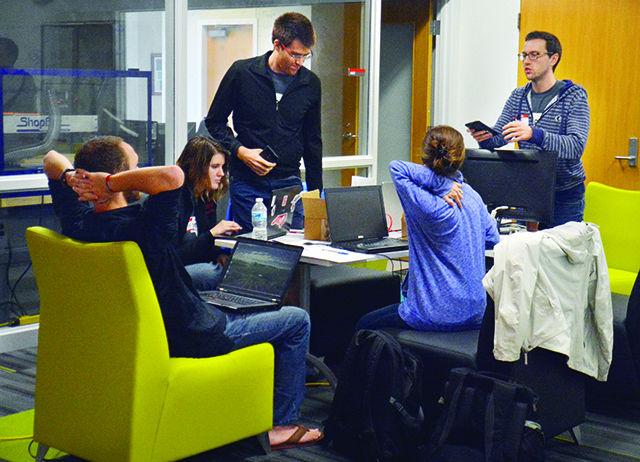Dozens of participants made their way to Centennial Campus this weekend for the inaugural Hackathon event hosted by the Center for Advanced Self-Powered Systems of Integrated Sensors and Technologies at NC State and North Carolina Regional Internet of Things.
Aimed toward bringing together groups of tech-minded individuals to create real-world appliances using innovative technologies, Hackathon challenged nine groups to compete against one another and create the most marketable idea during the weekend. Ideas ranged from wearable sleep apnea devices, to technology that could monitor the condition of a home while the owner is away.
The teams that presented the most market-ready hacks have the opportunity to be placed in a fast-track entry in Groundworks Labs’ local startup accelerator, according to Tom Snyder, the industry liaison of the National Science Foundation ASSIST Center.
Snyder said the “hacking” groups engaged in piecing together available hardware and software in order to develop new and useful technologies that could compete in the marketplace.
James Branigan, founder and platform architect of Bright Wolf, said the competition is meant to get commercially viable startups off the ground.
“All too often at these Hackathons, people will spend far too long picking out their hardware and software, and run out of time before they can make anything that works,” Branigan said. “We provide them with the components that they can build their ideas on so they can begin working on real-world appliances.”
Larry Steffann, a general manager at Wireless Research Center of North Carolina and an organizer of this year’s Hackathon, said he expects at least some of the projects presented at this year’s Hackathon to become funded startups.
“We believe the Internet of Things will be bigger than the initial wave of the Internet,” Steffann said.
Steffann helped the competitors achieve this by hosting a workshop on developing the business side of their ideas so they understood that the technology they were working on was meant to help solve real-world issues and not just lay around as pieces of novelty software.
Hackathon began with competitors pitching ideas and forming their groups before picking out the hardware they would need to bring their project to life. Device Solutions provided the hardware and Bright Wolf provided data analysis software. From there, competitors had to build their own programs and devices that made their projects run.
Competitors worked on a wide range of interesting technologies. Among these were devices that helped with monitoring asthma, a software that monitored the condition of electric lanterns in rural India and a medical software that helped immobile medical patients insure they got their medication on time.
Steffann said the event was everything they had hoped. Turnout consisted largely of NC State students, but representatives from UNC-Chapel Hill, Duke, UNC-Greensboro and even some high schools made appearances in the competition.
“We want to make this a yearly event,” Steffann said. “Go big or go home.”








